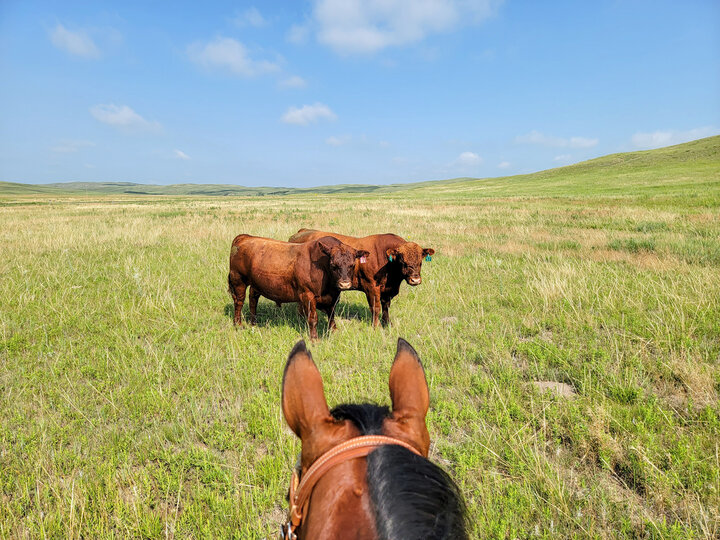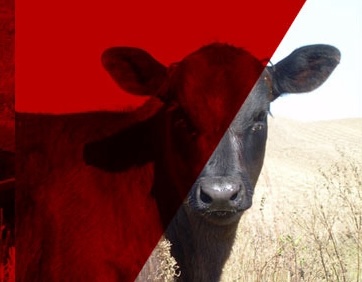In a long-term study, Oklahoma State University researchers mated crossbred cows to Angus or Hereford bulls that were either very high or very low for milk expected progeny differences (EPDs). The difference in High and Low Milk EPDs for Angus sires was 27.3 lb. Heifers from these matings were born over a 5-year period (1989 through 1993). When the heifers were 6, 7, and 8 years old, milk production was measured, and weaning weights of their calves were compared. Following is a summary of results:
- Cows sired by High Milk bulls produced significantly (P<0.05) more milk than cows sired by Low Milk bulls in all months except for the seventh month.
- Cows sired by High Milk bulls had 30.5 lb heavier calves at weaning than those sired by Low Milk EPD bulls. The difference was 30.8 lb for Angus cows and 30.2 lb for Hereford cows.
- Cows sired by High Milk Angus bulls were significantly lighter than those sired by Low Milk Angus bulls (1156 vs. 1210 lb). However, High and Low Milk Hereford cows did not differ significantly in body weight.
- Cows sired by High Milk bulls had significantly lower body condition scores than cows sired by Low Milk bulls (4.97 vs. 5.27 for Angus and 5.10 vs. 5.27 for Hereford).
- Compared to Low Milk cows, there was a tendency for High Milk cows to have longer calving intervals, later calving dates, and lower calving percentages than Low Milk cows. However, the differences were not statistically significant.
These results indicate that High Milk EPD bulls sire cows that produce more milk and wean heavier calves than cows sired by Low Milk EPD bulls, but may do so at the expense of body condition and reproductive efficiency.

